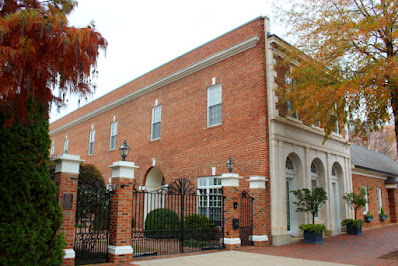Kings Mountain National Military Park in South Carolina is only a few miles southeast of Bowling Springs (North Carolina), so one afternoon when Ashley did not have classes we toured the park.
I did not realize the importance of this battle in the Revolutionary War until we visited the site and watched a movie in the visitor center.
In 1780, the war was at a stalemate in the north; so the British decided to assemble troops in the southern royal colonies and then march north to help the northern troop attack the Patriot forces from two sides.
On May 29, 1780, while assembling British troops in the south, British Col. Tarleton found a group of 400 Virginia Patriots near Waxhaws, South Carolina, and quickly overpowered them. The Patriots raised a white flag to surrender, but Tarleton ignored the white flag and slaughtered 113 Patriots, maimed over 100 and left them to die on the battlefield, and took the rest prisoners. This infuriated the Patriots. Tarleton was nicknamed "Bloody Ban" and the Patriot's cry for revenge was "give the Tarleton's quarter."
Also in South Carolina at this time was Major Ferguson. Ferguson was inventor of the Ferguson rifle that was more accurate and far superior to the American Long Rifle used by the Patriots. Using the Ferguson rifle, Major Ferguson was the best marksman in the British Army. Once he had the opportunity to shoot George Washington at close range, but before he could get off a shot, Washington turned around and Ferguson refused to shoot him in the back.
In September, Ferguson sent a message to Patriot leader Col. Shelby of the "backwater men" that if he did not surrender, he would "hang their leaders, and lay their country to waste with fire and sword." He also said that he would kill all of the people living in the area. People in the south were enraged. They were so upset over his comments that many who had been neutral on the war, suddenly joined the Patriots in great numbers and vowed to finish Ferguson once and for all. A large number of Patriots started tracking Ferguson, but spies tipped off Ferguson that a growing number of men were pursuing him. Ferguson then headed for Charlotte where there were British troops to protect him.
On October 6, 1780, Ferguson and his men camped atop King Mountain, where he decided to stay and wait for the Patriots rather continuing his march to Charlotte. King Mountain was the high point in the area, so Ferguson was confident he had an excellent position to defeat the Patriots.
On Saturday, October 7, the Patriots arrived and surrounded the mountain. Instead of charging up the mountain as Ferguson expected, the Patriots used guerrilla tactics. They hid behind trees as they advanced, which made them difficult for the British troops to see. On the other hand, the British troops were easy targets because they were standing silhouetted against the sky. Ferguson and most of his troops were killed during the battle. This was a devastating loss to British General Cornwallis because it weakened his entire left flank. On October 19, 1781, Cornwallis surrendered to George Washington at Yorktown, ending the American Revolutionary War.
Ashley and I hiked to the top of Kings Mountain to see the markers along the way and the large obelisk at the mountain top.
 |
| Col. Patrick Ferguson (1744-1780) |
 |
| Col. Frederick Hambright |
 |
| Lt. Col. James Hawthorn |
Landrum (population 2,481), South Carolina, is a few miles south of the North Carolina border. Starting in about 1760, the area was settled by homesteaders from Pennsylvania, Maryland, and Virginia. As homesteaders kept arriving, Earl's Fort was built in the area to help defend settlers against frequent Indian attacks. Nothing remains of the fort today.
Linda's favorite thing in Landrum was the Cousins Maine Lobster food truck parked by the side of the road. I failed to get a picture of the truck, but I did get a picture of the Lobster Roll container.
Spartanburg (population 38,732) is included in the 10-county region in northwestern South Carolina known as "The Upstate." In the heyday of railroads, Spartanburg was called "Hub City" because a large number of railroad tracks radiated from the center of town in the shape of a wheel hub.
Spartanburg is now the headquarters for Denny's restaurant chain, KYMCO, Smith Drug Company, Advance American Cash Advance, American Credit Acceptance, Upward Sports, Milliken & Company, and there is a BMW automotive manufacturing facility located just to the west in Greer. The automotive plant produces about 1,400 BMW vehicles per day.
Morgan Square in Downtown Spartanburg contains a variety of historic buildings, businesses, restaurants, and art works. We had planned to stay in Spartanburg longer, but we ran out of time and we wanted to get back to Boiling Springs before dark.


























No comments:
Post a Comment